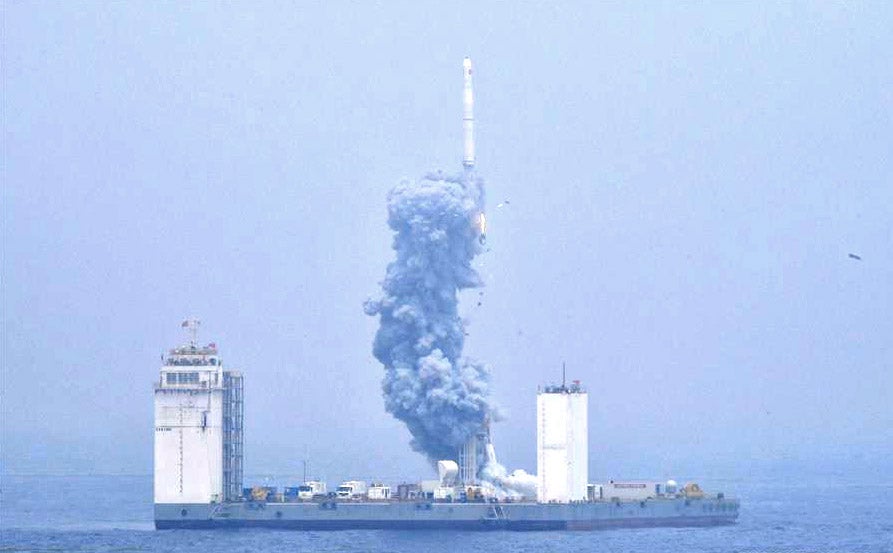
by Sehr Rushmeen 9 December 2023
The successful launch of China’s Smart Dragon-3 (SD-3) carrier rocket marks an important step forward in the country’s pursuit of superior space technology, strategically aligning with its broader regional and technological aspirations in the South China Sea. The SD-3, developed by the China Academy of Launch Vehicle Technology, represents a significant leap in China’s space capabilities, demonstrating the country’s ability to deploy satellite constellations with rapid technical preparation and launch within a week.
The major goal of the SD-3-launched test satellite is to evaluate satellite internet technologies, demonstrating China’s commitment to improving its satellite communication and broadband services. This technology innovation has the potential to improve communication infrastructure, disaster management, and military communication capabilities, among other things. Furthermore, the SD-3 series, which began in 2022, adds to China’s rising prowess in commercial satellite launches by providing chances for both domestic and international commercial organizations to launch satellites while also earning cash for China’s burgeoning space sector.
The long-distance mobile launch operation at sea demonstrates China’s capacity to launch rockets from portable platforms in rough seas. Given China’s territorial claims and interests in the South China Sea, this capability improves launch flexibility and minimizes vulnerability when compared to fixed launch sites. The launch from the waters off the coast of Yangjiang, Guangdong Province, represents a strategic maneuver with regional repercussions. The successful completion of a long-distance mobile launch operation at sea demonstrates China’s growing marine logistics capabilities. The launch ship’s trip of approximately 1,300 nautical miles in five and a half days demonstrates the extensive logistical infrastructure that supports such operations, which is critical not only for space missions but also for larger marine activity.
Strategically, China’s submarine launch and actions in the South China Sea send a strong statement to the world community. It underlines China’s commitment to scientific advancement as well as its aspiration to become a prominent spacefaring nation. The construction of a final assembly and testing facility for the SD-3 and other solid-propellant carrier rockets demonstrates China’s commitment to growing its space industry. With increased production capacity, China becomes a serious competitor in the global commercial launch business, influencing regional dynamics.
However, China’s improvements in space technology and maritime launch capabilities raise geopolitical concerns for South China Sea allies. The successful deployment of the SD-3 carrier rocket strengthens China’s technological capabilities and operational flexibility, potentially changing power balances along key maritime and aviation routes. To offset China’s expanding influence, regional partners must carefully traverse this changing geopolitical terrain, contemplating coordinated actions with like-minded governments. Against the backdrop of the recent passage of the USS Gabrielle Giffords through disputed seas in the South China Sea, tensions are heightened, emphasizing the sensitivity surrounding territorial claims. China’s reaction characterizes such actions as a “deliberate stirring up” by the US, highlighting the increased complexities in the region’s strategic dynamics.
Finally, China’s successes in space technology, as evidenced by the SD-3 carrier rocket launch and marine capabilities, reflect the country’s dedication to technological leadership and geopolitical influence. Regional allies must adjust to this shifting scenario, which necessitates sophisticated policies to safeguard their interests and sustain regional stability in the face of growing technology and geopolitical maneuvers.
